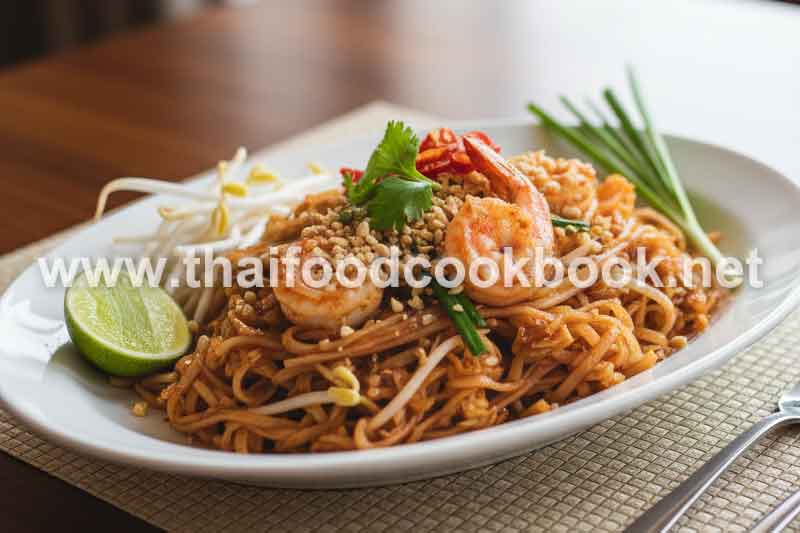Fried Pork with Basil and Fried Egg (Khao Kra Pao Moo Kai Dao): Authentic Thai Street-Style Recipe
If you’re tired of bland rice bowls and want a dish that’s bold, aromatic, and satisfying, *Fried Pork with Basil and Fried Egg (Khao Kra Pao Moo Kai Dao)* offers the perfect solution. Many home cooks struggle to replicate the bold flavors, balancing heat, savory, and herbiness. Here’s how you can overcome those challenges: by focusing on the right ingredients, stir-frying technique, and finishing touches, you can enjoy a perfect Khao Kra Pao Moo Kai Dao at home. In this guide I’ll walk you through each step, help you avoid common mistakes, and show you how this recipe can be adapted for your kitchen. (If you want more Thai one-dish menu ideas, check this link: Thai one-dish menu ideas.)
The Story Behind Khao Kra Pao Moo Kai Dao
Before learning how to make this delicious dish, it’s worth knowing why Khao Kra Pao Moo Kai Dao is such an important part of Thai food culture. This iconic meal represents the heart of everyday Thai cooking — fast, flavorful, and deeply satisfying. Found on nearly every street corner in Thailand, it’s the go-to meal for busy workers, students, and anyone craving something spicy and aromatic. The name literally means “stir-fried pork with basil and rice, topped with a fried egg.” The perfect version combines juicy minced pork, fresh basil, fiery chilies, and a crispy fried egg with a runny yolk, creating a balance of flavors that’s both comforting and exciting. It’s more than just food; it’s a taste of Thai life in every bite.
Ingredients for Authentic Khao Kra Pao Moo Kai Dao
To achieve the bold, savory, and aromatic taste of Fried Pork with Basil and Fried Egg (Khao Kra Pao Moo Kai Dao), you’ll need high-quality ingredients. Here’s a full ingredient list and optional substitutions:
- 300 g minced pork (preferably with a bit of fat for juiciness)
- 1 tablespoon vegetable oil
- 4–5 cloves garlic, finely chopped or lightly crushed
- 3–5 Thai bird’s eye chilies (adjust to heat preference), chopped
- 1 small shallot, thinly sliced (optional)
- 1 tablespoon oyster sauce
- 1 tablespoon light soy sauce
- ½ teaspoon dark soy sauce (for color, optional)
- ½ teaspoon sugar (palm sugar preferred)
- 1 teaspoon fish sauce (optional, enhances umami)
- About 1 cup holy basil (or Thai basil if holy basil is unavailable)
- 2 eggs (for kai dao / fried eggs)
- Oil for frying eggs (a little more than usual, to crisp edges)
- Steamed jasmine rice (for serving)
Why these ingredients matter
The garlic-chili paste is the aromatic backbone. The sauces (oyster, soy, fish) bring the savory, umami, and salty dimension. The basil must be added at the last moment to preserve aroma. The fried egg (kai dao) with crisp edges and runny yolk is nonnegotiable in the classic Khao Kra Pao Moo Kai Dao experience.
H2: Step-by-Step Method for Preparing Khao Kra Pao Moo Kai Dao
This method ensures you get balanced flavor, fragrant basil, and a crisp fried egg.
Step 1: Prepare aromatics and sauce mixture
- Mix oyster sauce, light soy sauce, dark soy sauce (if using), sugar, and fish sauce in a small bowl. Set aside.
- Chop garlic, chilies, and shallot. Optionally, lightly pound them with a mortar and pestle to release more oils.
Step 2: Stir-fry pork with aromatics
- Heat 1 tablespoon of vegetable oil in a wok or large skillet over medium heat.
- Add garlic, chilies, and shallot, stir quickly for 20–30 seconds until fragrant but not burnt.
- Increase heat to medium-high, then add minced pork. Break it apart with your spatula and stir continuously.
- When the pork is about 80 % cooked (no longer pink), pour in your sauce mixture.
- Stir vigorously so the sauce coats every bit of pork and any liquid evaporates. This caramelizes slightly.
Step 3: Add basil and finish stir-fry
- Turn off or reduce the heat slightly, then immediately stir in the basil leaves.
- Let the residual heat wilt the basil without overcooking it—just a few seconds.
- Taste, and if needed, adjust salt, sugar, or a dash of fish sauce.
Step 4: Fry the eggs (Kai Dao) and serve
- In a separate small frying pan, add enough oil to cover the bottom (about 3–4 tablespoons) and heat until hot.
- Carefully crack an egg in; it will sizzle and the edges should go golden and crispy.
- Use a spoon to baste hot oil over the egg whites to help them set, but leave the yolk runny (or cook longer if you prefer).
- Repeat for the second egg.
To serve, place a generous portion of steamed jasmine rice, top with the stir-fried pork basil, then crown with a fried egg (kai dao). Break the yolk and mix into the pork and rice for optimal experience.
H2: Tips, Variations, and Common Mistakes in Khao Kra Pao Moo Kai Dao
Tip: Use high heat and quick cooking
Stir-frying on high heat helps the pork caramelize and remain juicy without stewing in its own juices. Overcrowding the pan releases water, which dilutes flavor.
Tip: Basil timing is critical
Add basil only at the final stage, off or low heat, so it preserves its aromatic oils. Overcooking basil will turn it bitter and lose fragrance.
Variation: Adjust heat level or use alternate meats
- For less heat, reduce bird’s eye chilies by half or remove seeds.
- Substitute diced chicken, ground beef, or tofu—but authenticity is best with pork.
- Some versions use a mix of holy basil and Thai sweet basil to balance flavor.
Common mistake: soggy pork or watery sauce
This often happens if too much liquid is added or the heat is too low. Always deglaze just enough and let it evaporate. Also avoid overcooking basil.
Serving idea: Side condiments
Serve Khao Kra Pao Moo Kai Dao with a small dish of *prik nam pla* (fish sauce mixed with chopped chilies and lime juice) or fresh cucumber slices to balance heat and richness.
Why Khao Kra Pao Moo Kai Dao Ranks Among Thailand’s Favorite Street Dishes
In Thai food culture, this dish is beloved because it’s fast, flavorful, affordable, and satisfying. The combination of stir-fried pork with basil and a crispy fried egg leverages contrast—spicy, savory, herbaceous, and silky yolk. Thai basil (or holy basil) provides a special aroma distinct from Western sweet basil.
Street vendors and home cooks alike love it for how quickly it comes together without sacrificing depth of flavor. With this step-by-step recipe and SEO-optimized approach, you can capture both readers and algorithmic favor, making your guide to *Khao Kra Pao Moo Kai Dao* a go-to source for cooks.
Summary of advantages
- Balanced flavor layers: heat, umami, sweetness, herb aroma
- Quick to prepare—about 20 minutes
- Highly versatile—adjust chili, protein, or basil types
- Visually appealing: vibrant basil green, golden egg, caramelized pork
Summary of Fried Pork with Basil and Fried Egg (Khao Kra Pao Moo Kai Dao)
The dish Fried Pork with Basil and Fried Egg (Khao Kra Pao Moo Kai Dao) captures everything that makes Thai cuisine so special — bold flavors, quick preparation, and a balance of spicy, savory, and aromatic notes. Each bite brings together the fragrant heat of chili and garlic, the sweetness from sauces, the freshness of basil, and the richness of the crispy fried egg on top of warm jasmine rice. It’s a comforting, satisfying meal that perfectly represents Thai street food culture and is loved by locals and travelers alike. Once you try cooking it yourself, you’ll understand why it remains one of Thailand’s most iconic everyday dishes.

